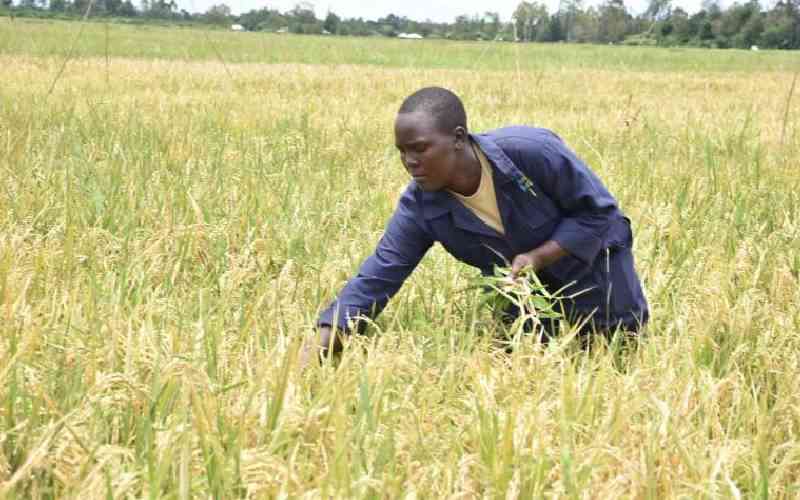More than 300,000 farmers in western Kenya vulnerable to parasitic Striga weed, locally known as "kwekwe", have a reason to smile.
This follows the unveiling of the Sh3 million equipment at the Kenya Seed Company (KSC) to produce Striga-resistant maize seeds. The equipment was donated Integrated Striga Management in Africa.
Using the technology, KSC will produce and test maize seed branded Ua Kayongo H1 targeting poor farmers in the region under threat from Striga weed infestation.
The development of the variety follows a seven-year research by a group of scientists from International Maize and Wheat Improvement Centre (Cimmyt), Basf Chemical Company and African Agricultural Technology Foundation (Aatf)).
Scientists at Cimmyt, Weiman Institute of Science and Kenya Agricultural Research Institute are developing the variety en mass.
Dr Henz Friedrich Schnier, a technologist who commissioned the machine at the KSC‘s Elgon Downs Farm in Kitale said, "This is a milestone to improve food security in Kenya and we will train KSC workers on how to operate."
Gospel Omanya, Seed System Manager at Aatf, said Striga weed has destabilised food security of more than 2 million people in Nyanza and Western region.
The use of Imazapyr-resistant maize technology to control Striga permits grain yields of up to 2 tonnes per hectare compared to an average of 0.5 tonnes obtained from traditional maize varieties.
"The infestation of the weed causes between 20 to 10 per cent grain yields loss in many fields of western Kenya, affecting over 250,000 hectares of maize crops," said the researcher.
"It is worse in the Lake Victoria Basin and farmers lose over 300,000 tons or a value of $132 million of maize grains every year."
Under the new technology, seeds are treated and coated with chemical substances from a combination of herbicides, fungicides and pesticides. The herbicide-coated maize seed kills the Striga before it damages the maize crop.
The four-year project is focusing on improving and expanding Striga control while supporting on-farm research to identify the most effective means of controlling parasitic weed varying conditions.
More harvests
Researchers estimate that the new technology will lead to an extra 375,000 tonnes of maize, capable of feeding 3.4 million people.
Many farmers in Western Kenya had abandoned maize growing for sugarcane due to high presence of the weed. "It is disappointing to spend a lot of resources, only to produce one or two bags of maize instead of 20 from an acre," said John Nyukuri, a farmer in Bungoma County who was pushed out of maize growing due to the weed.
Stay informed. Subscribe to our newsletter
Kenya Seed Company Managing Director Willy Bett said the firm would produce and distribute 40 tonnes of H1 maize variety to farmers in the western-belt this planting season.
He assured farmers of enough maize seeds for the planting season, unlike last year when the company experienced some shortages.
—Xinhua
 The Standard Group Plc is a
multi-media organization with investments in media platforms spanning newspaper
print operations, television, radio broadcasting, digital and online services. The
Standard Group is recognized as a leading multi-media house in Kenya with a key
influence in matters of national and international interest.
The Standard Group Plc is a
multi-media organization with investments in media platforms spanning newspaper
print operations, television, radio broadcasting, digital and online services. The
Standard Group is recognized as a leading multi-media house in Kenya with a key
influence in matters of national and international interest.
 The Standard Group Plc is a
multi-media organization with investments in media platforms spanning newspaper
print operations, television, radio broadcasting, digital and online services. The
Standard Group is recognized as a leading multi-media house in Kenya with a key
influence in matters of national and international interest.
The Standard Group Plc is a
multi-media organization with investments in media platforms spanning newspaper
print operations, television, radio broadcasting, digital and online services. The
Standard Group is recognized as a leading multi-media house in Kenya with a key
influence in matters of national and international interest.









